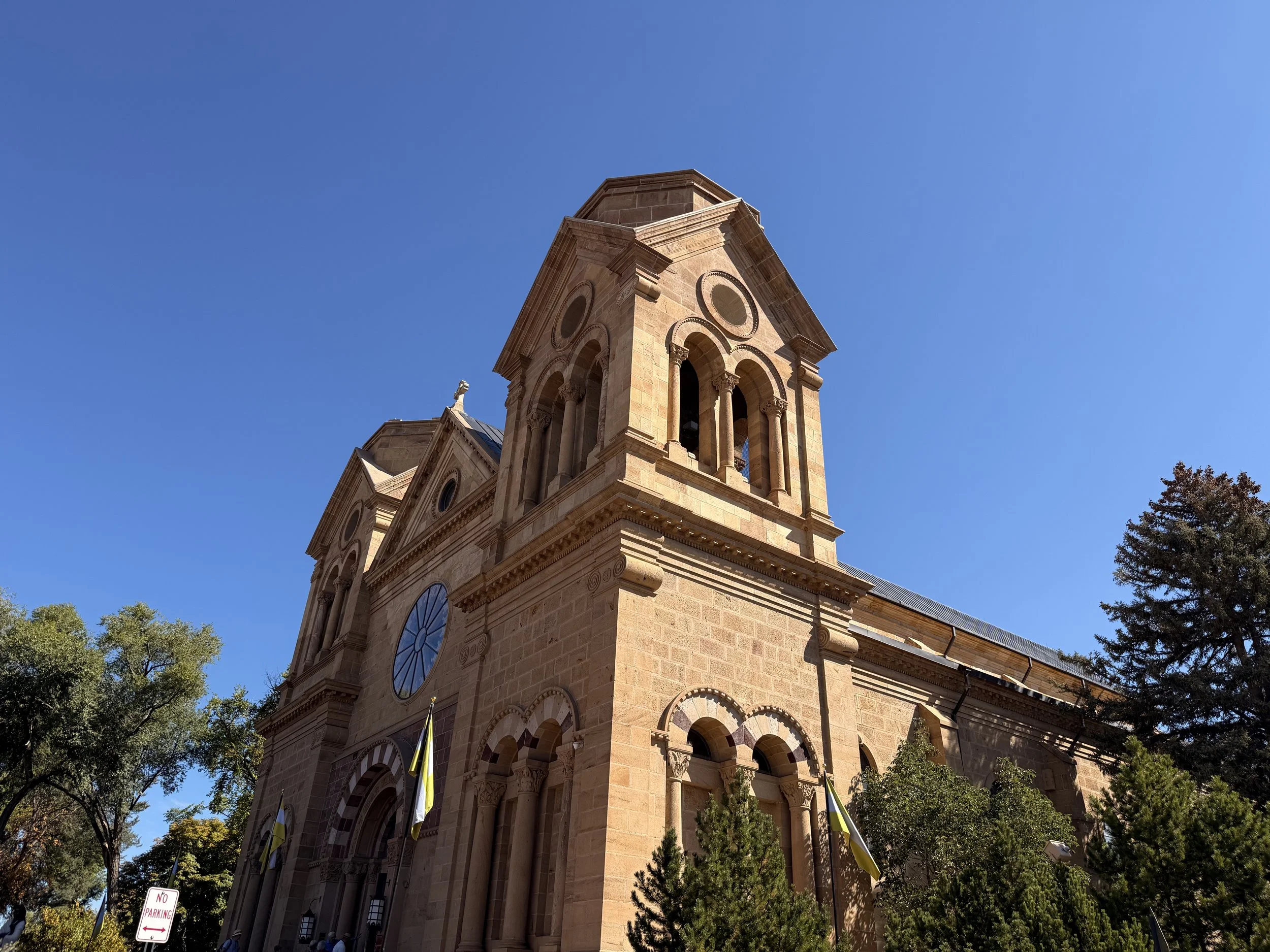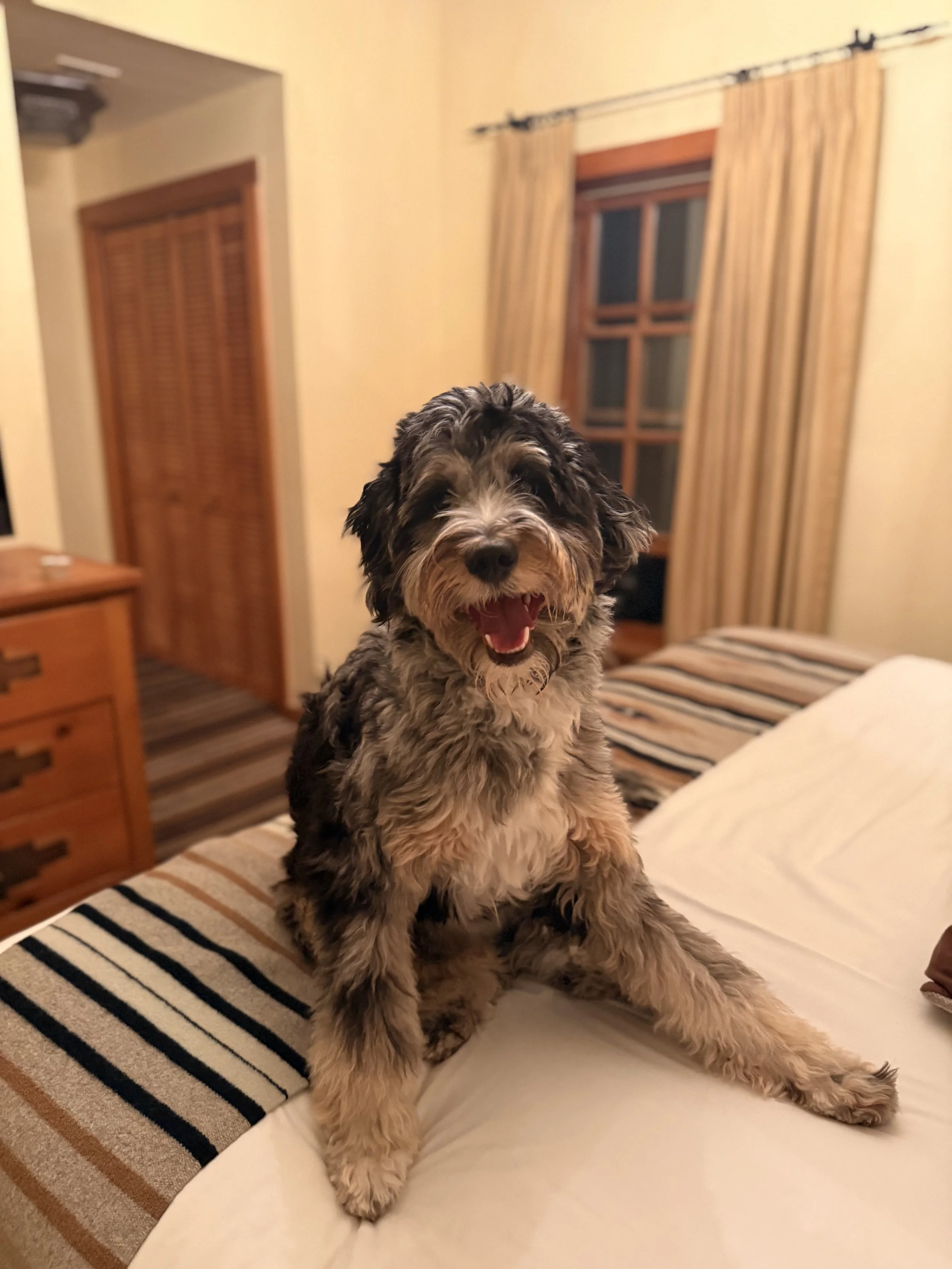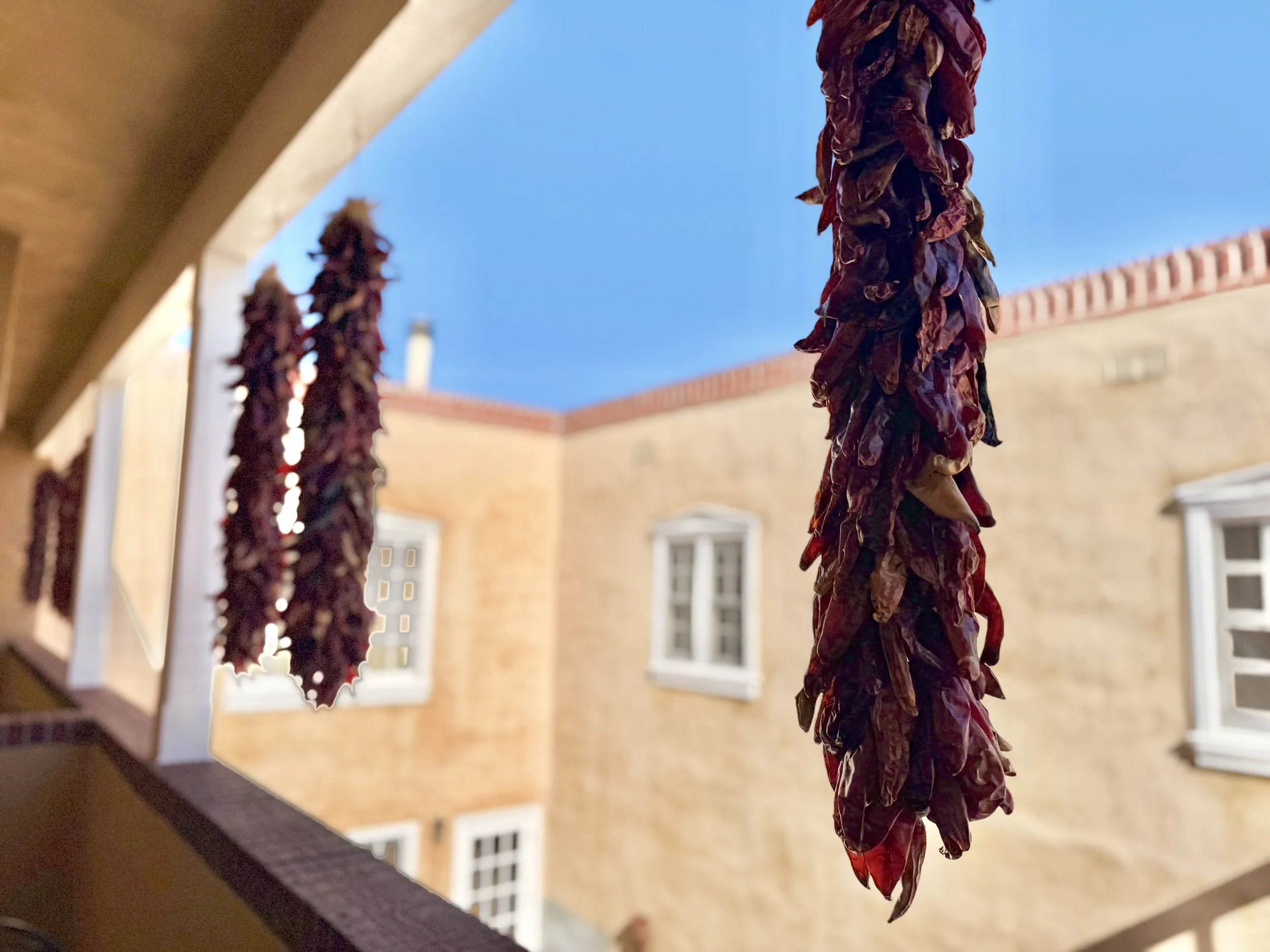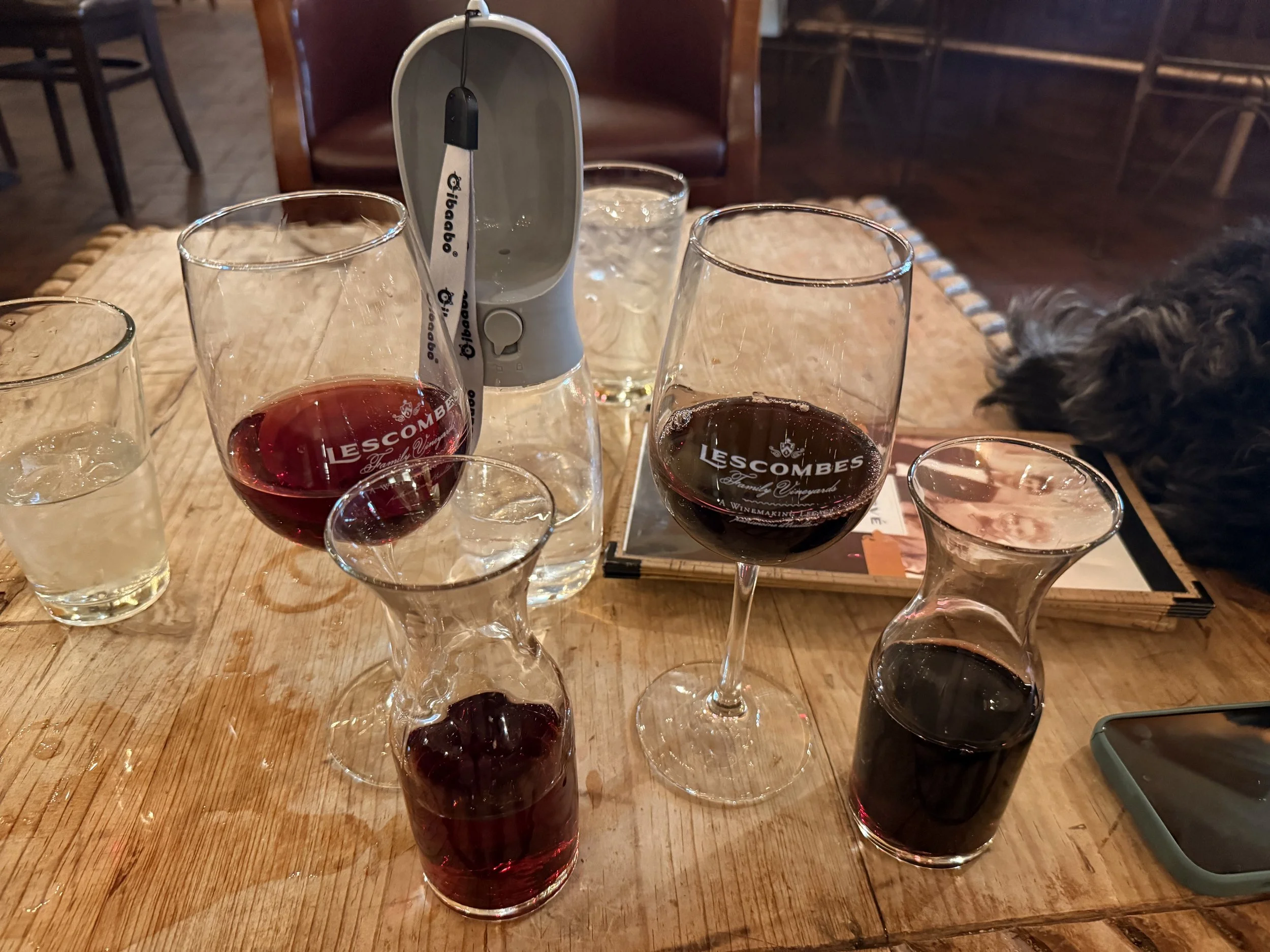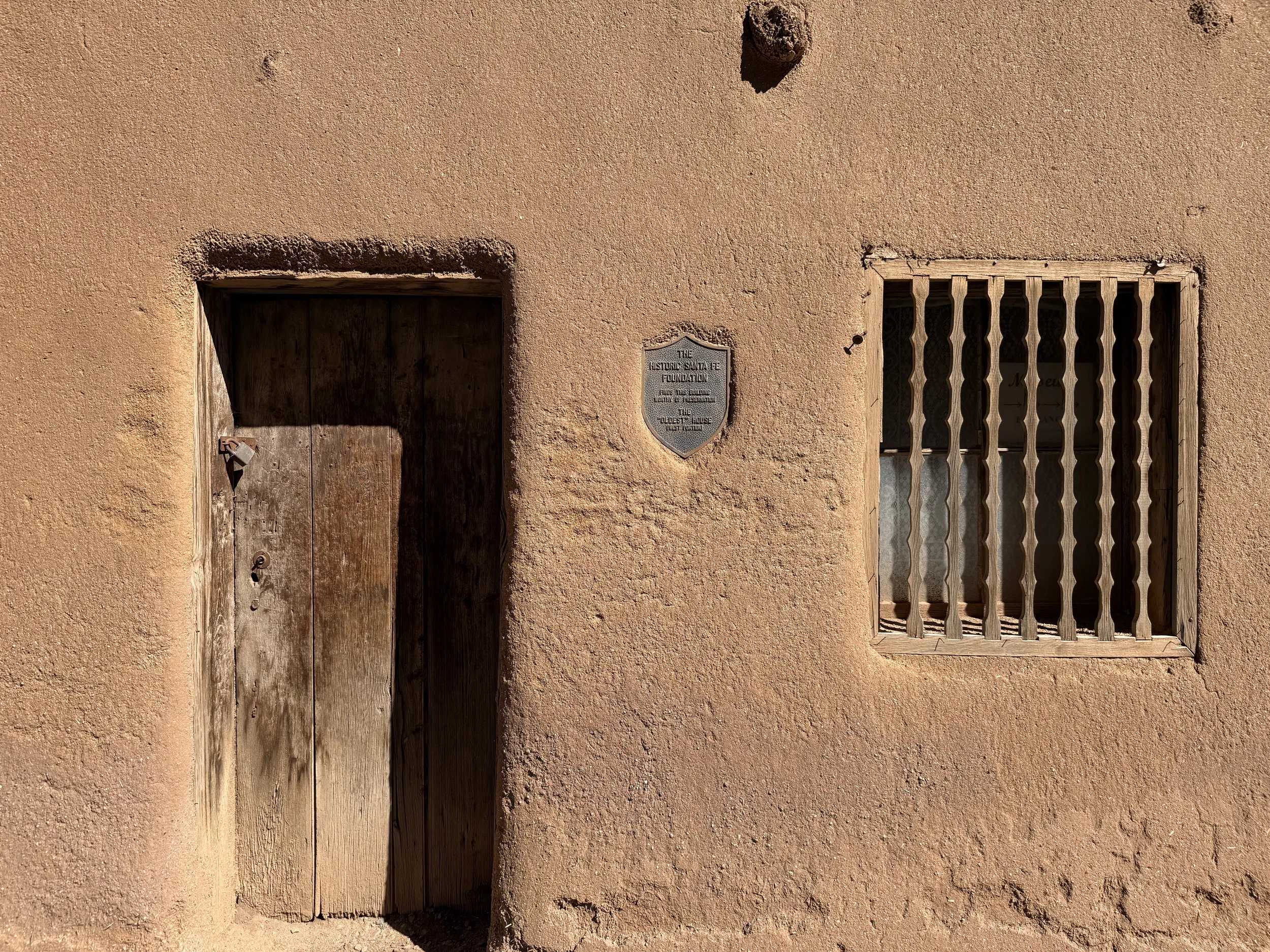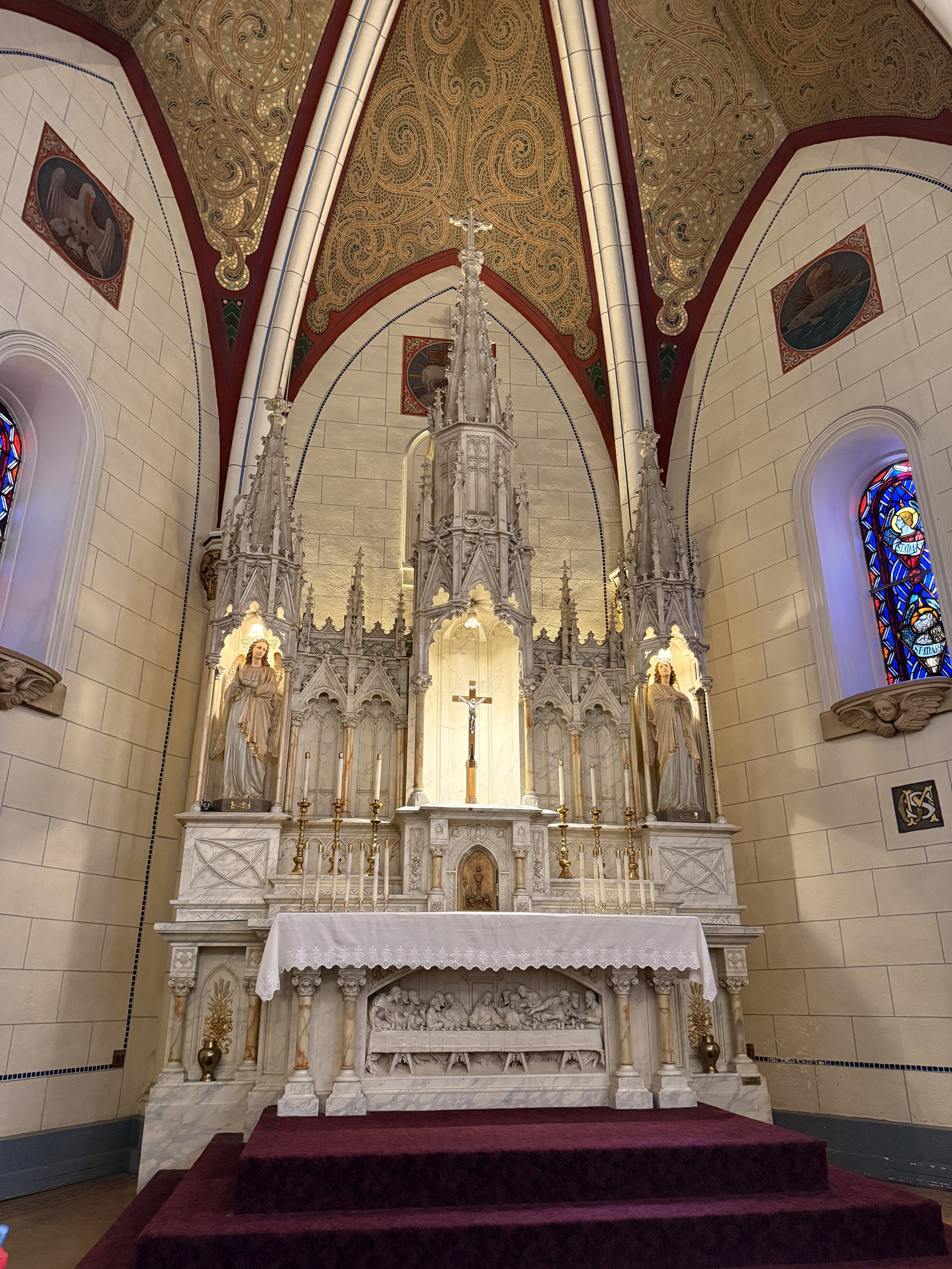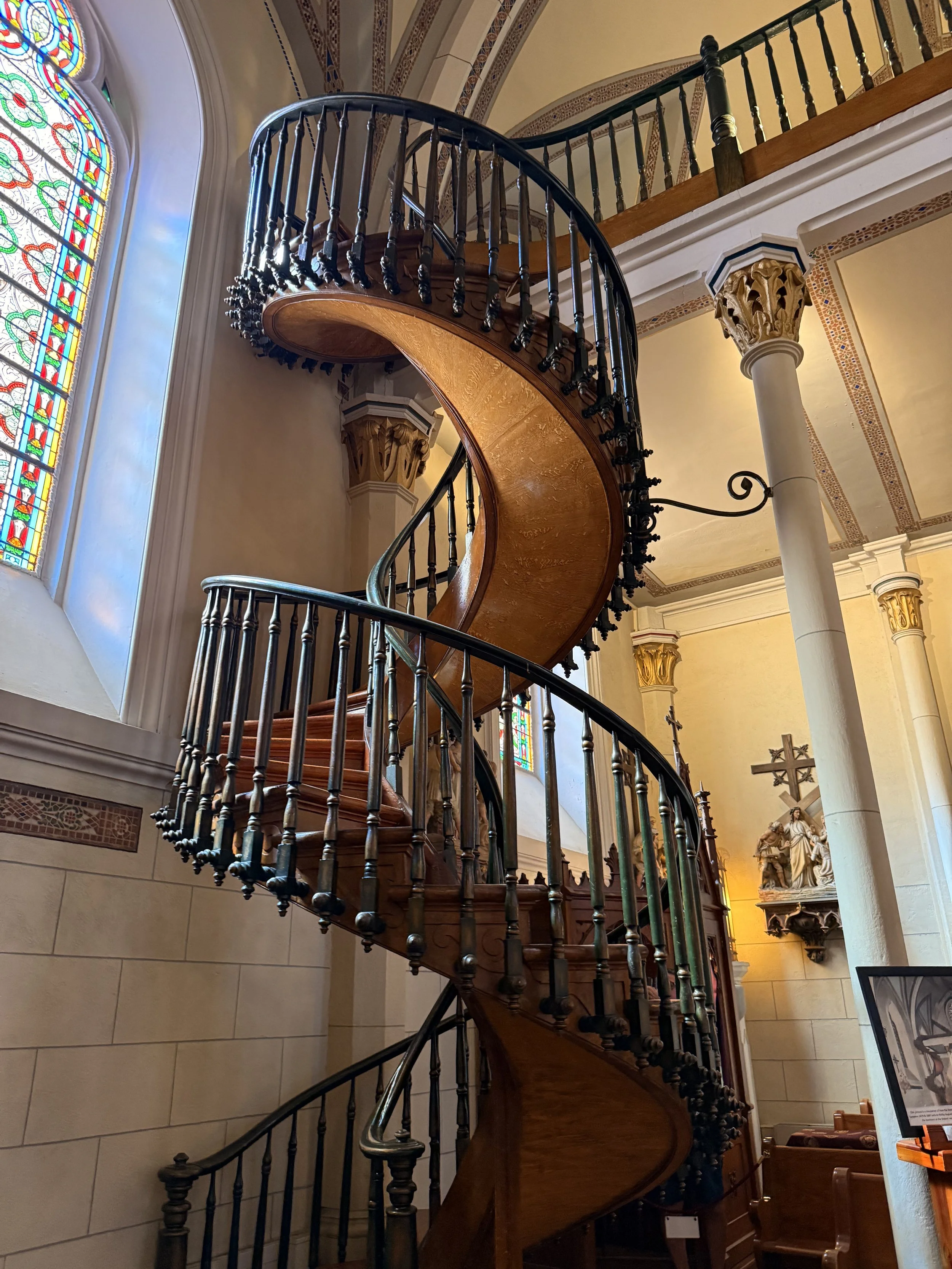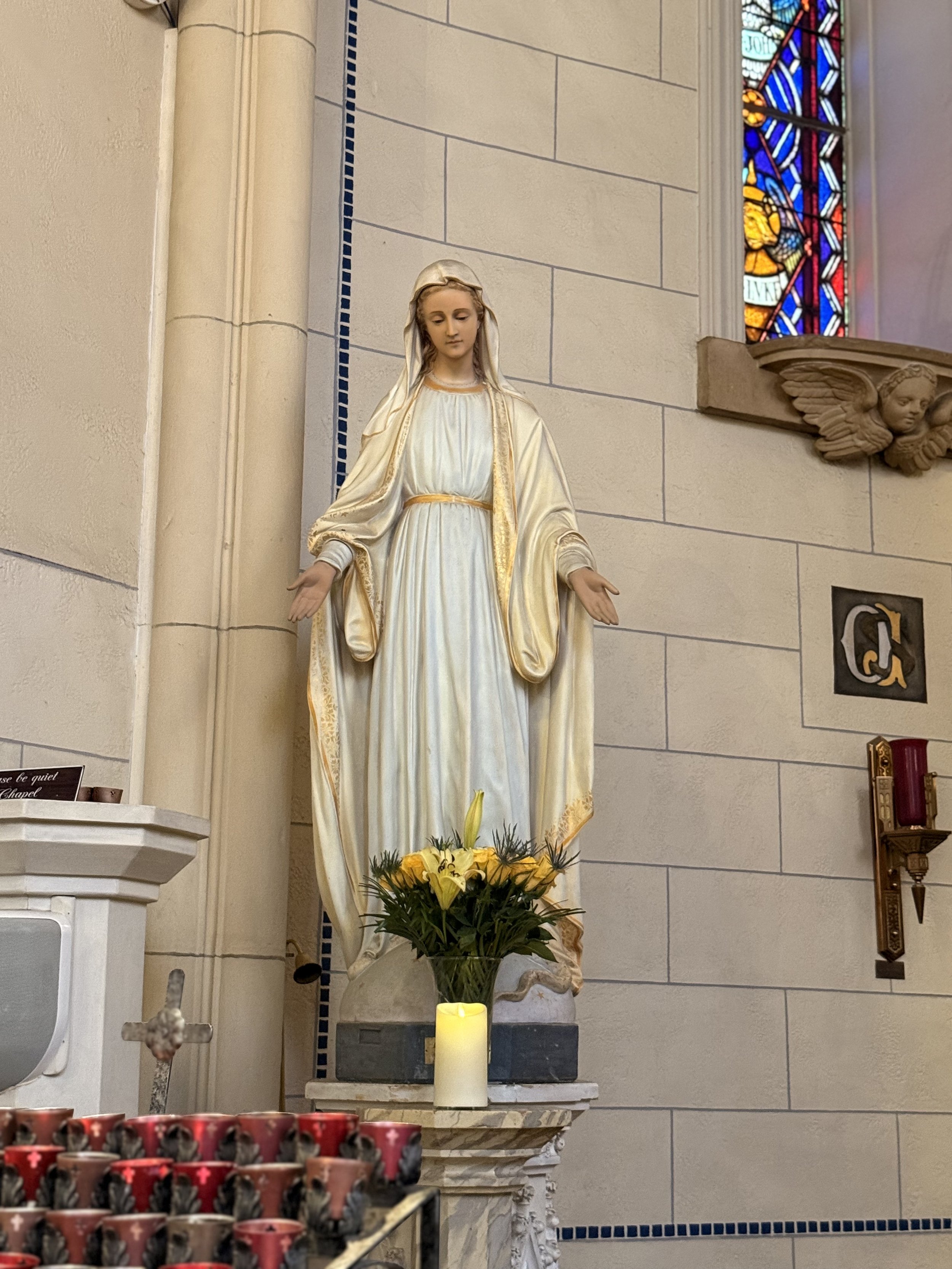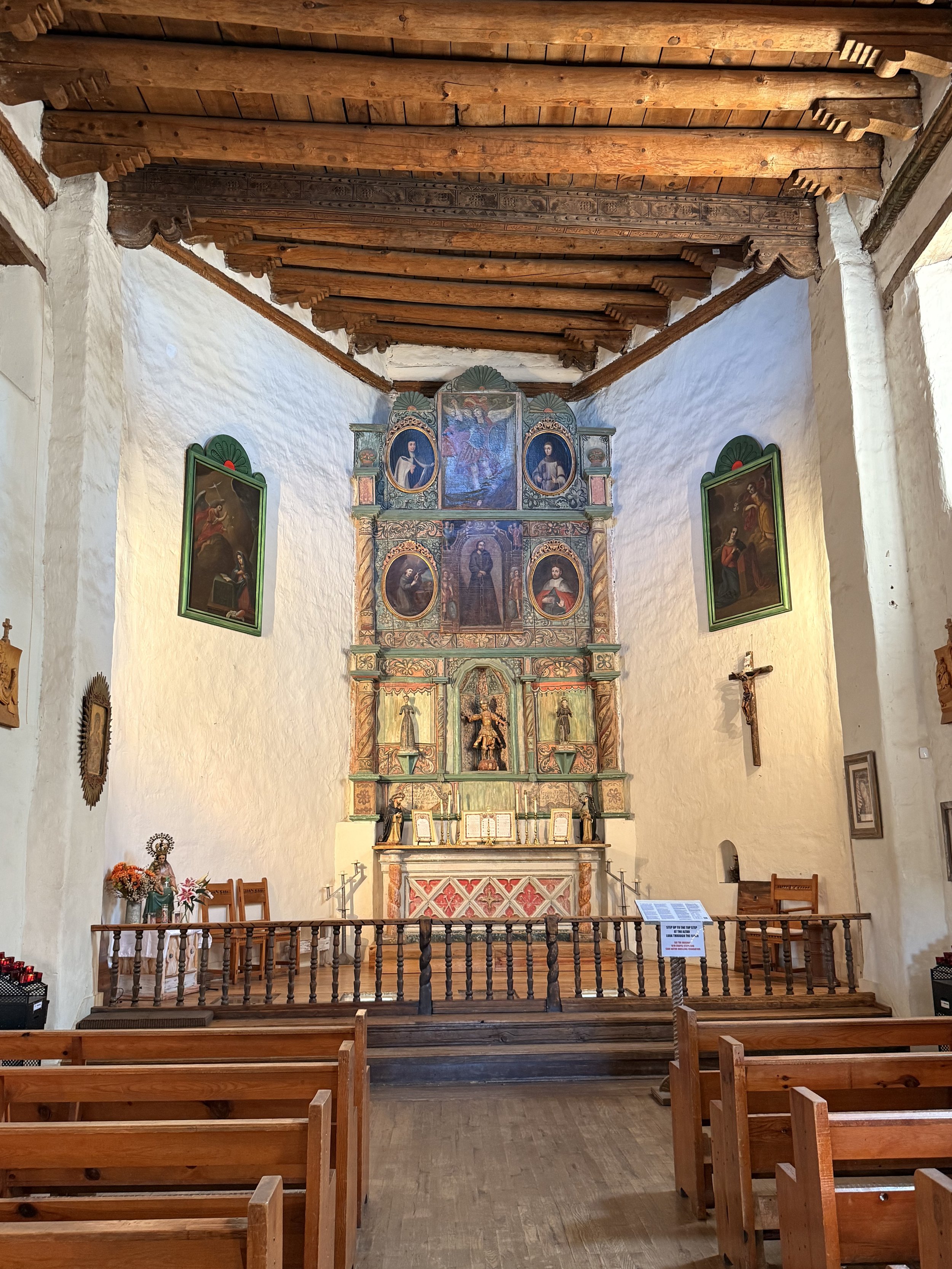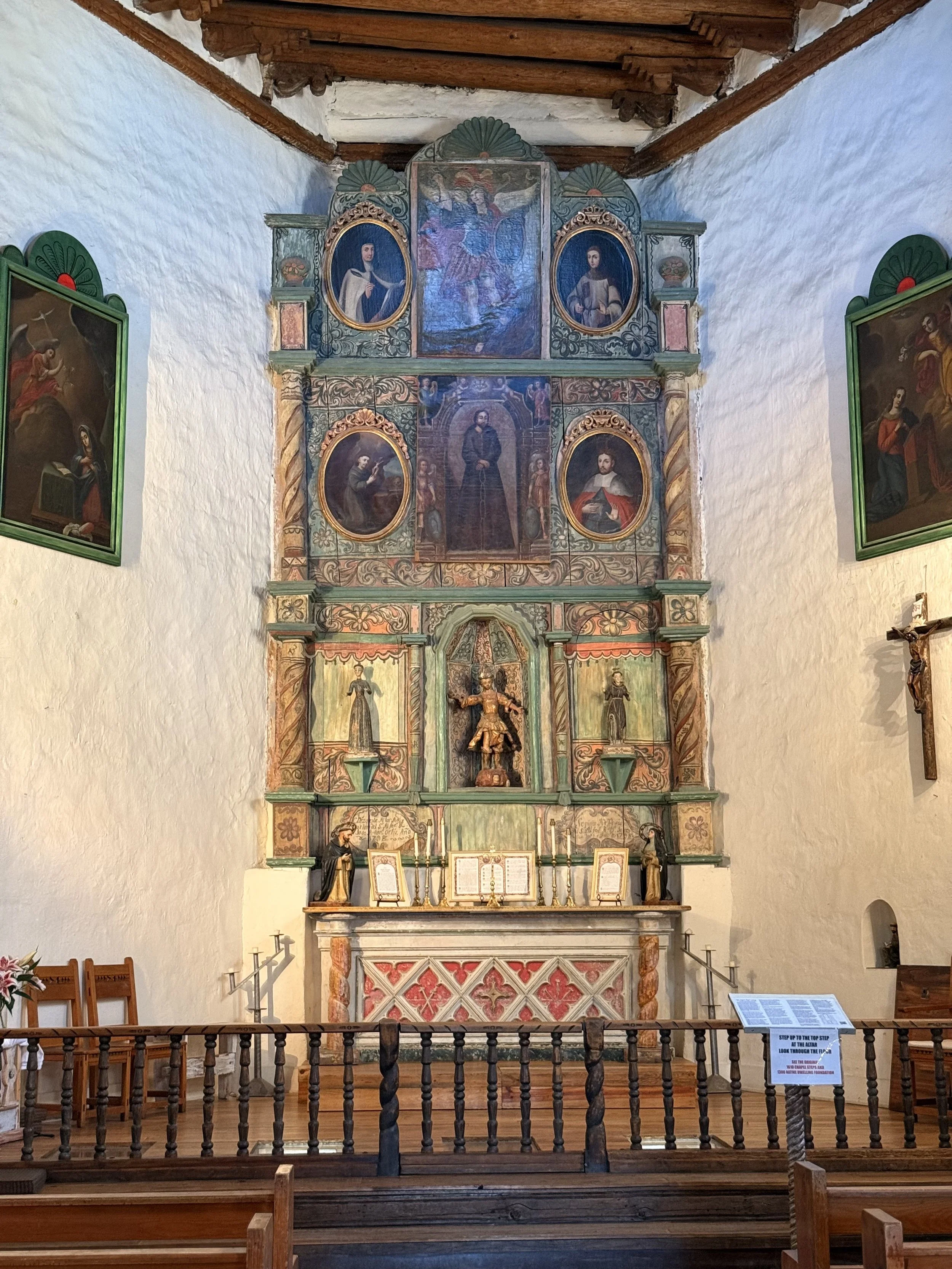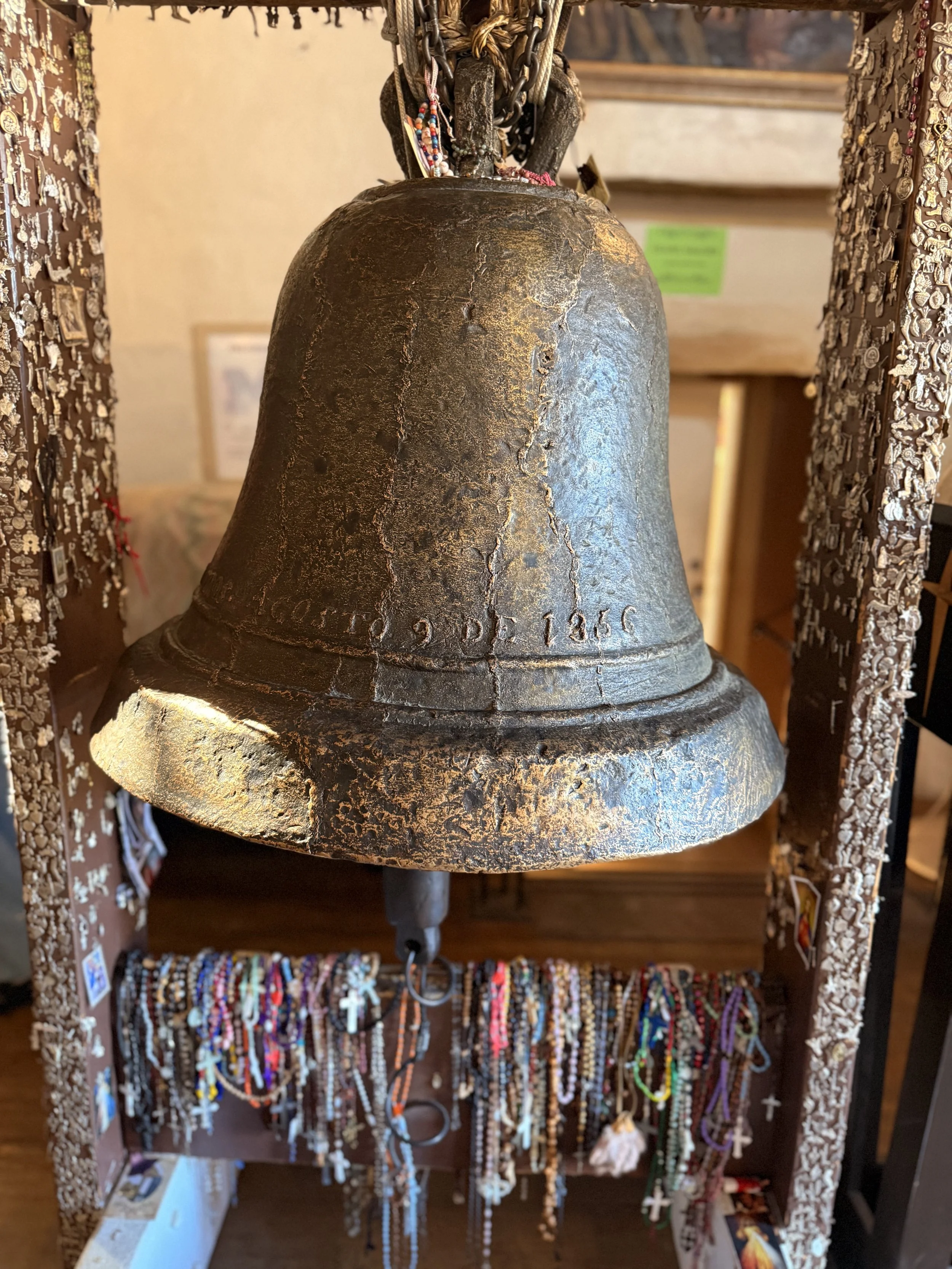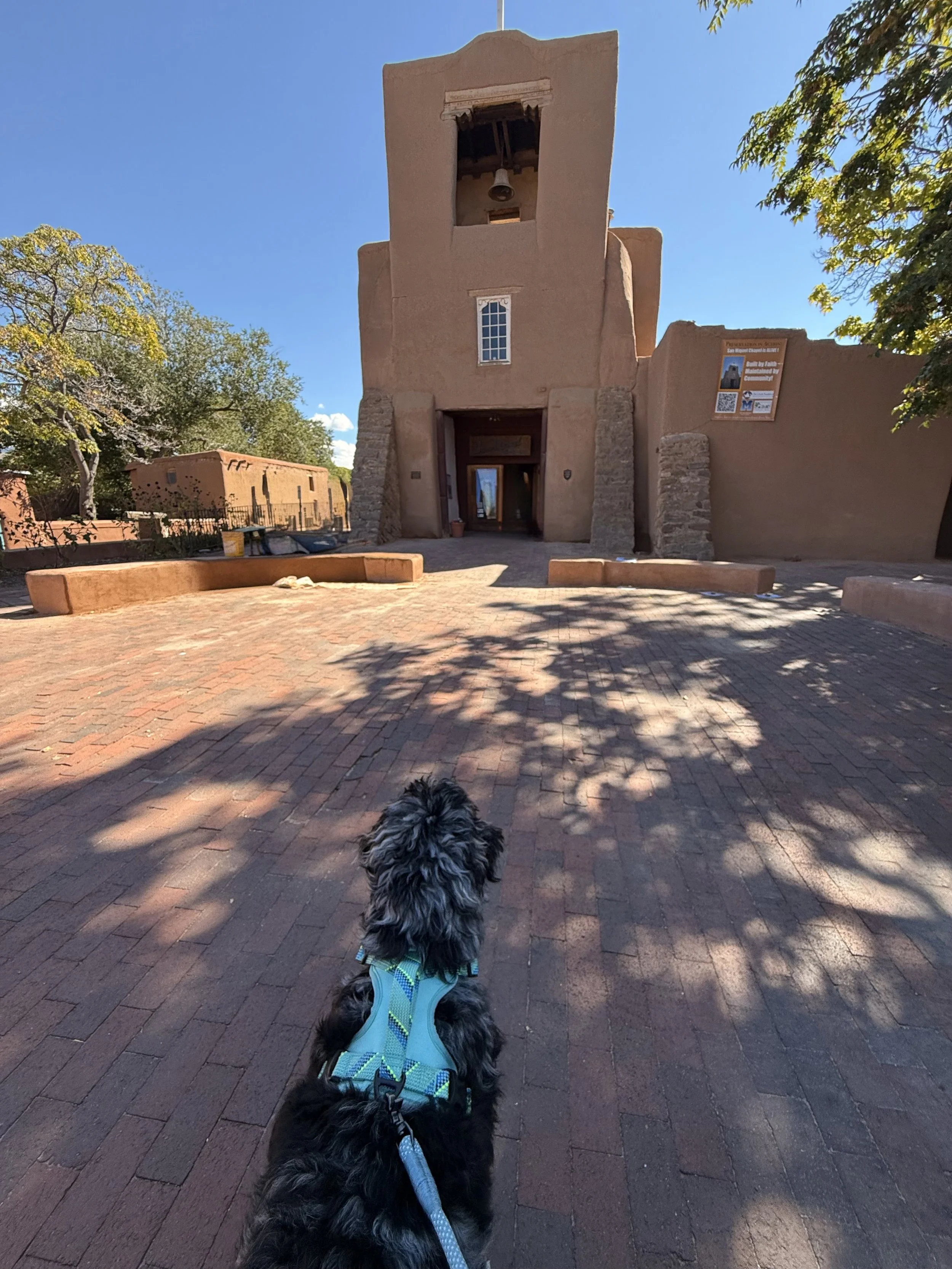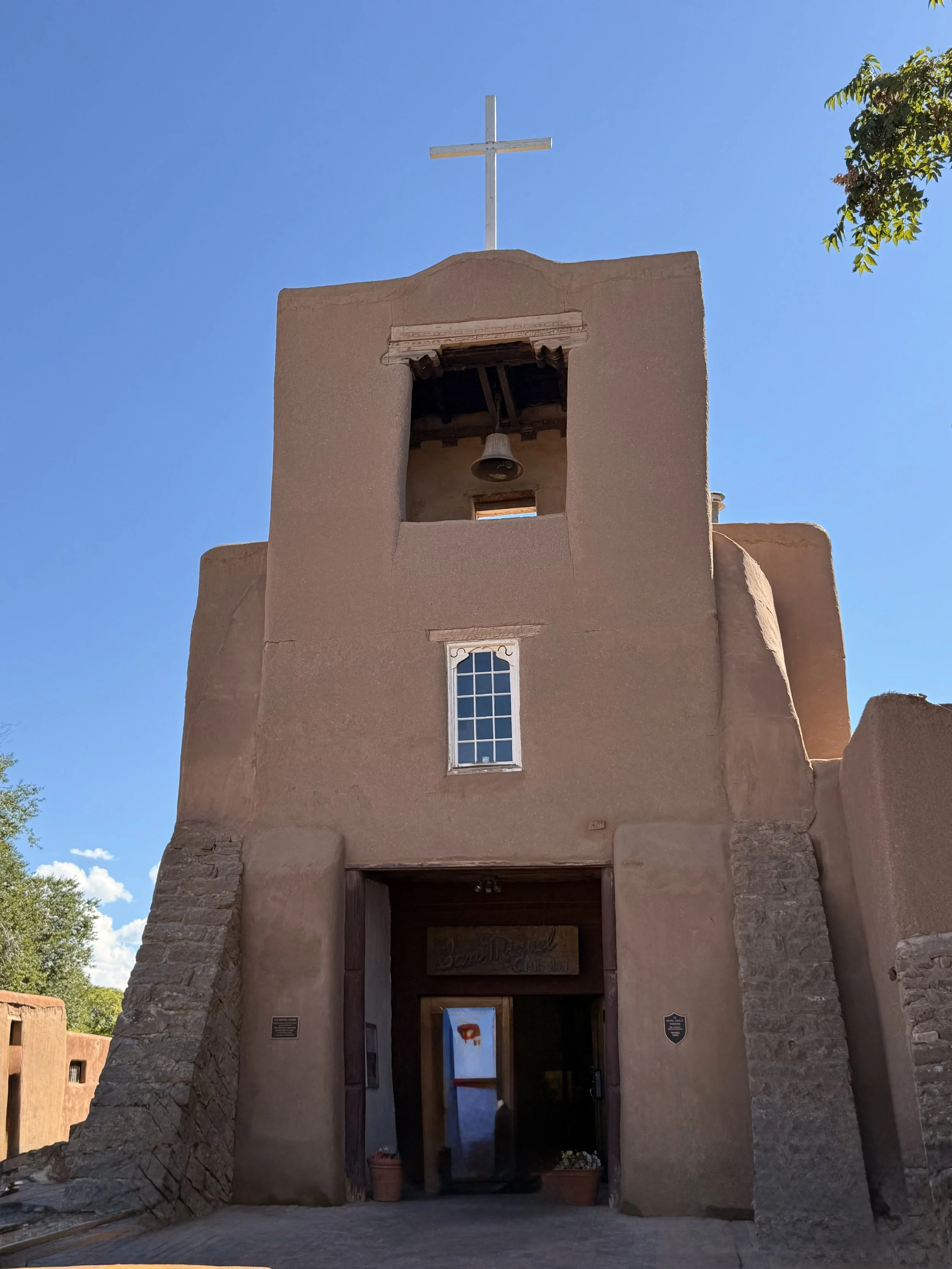Exploring Santa Fe, NM
Not only is Santa Fe the oldest capital in the United States, it’s also the second oldest city in the country and has served under the flags of Spain, Mexico, Confederacy, and the United States. From the art, to history, to healing spas, we had heard so much about how great it was that we finally checked it out. And… we found it to be like every other town in the state: sub-par.
The locals hate tourists, the historic area isn’t that safe at night, and the infrastructure is just plain run down. However, we invite you to be the judge. The below information is a complete guide of the best places to stay, the top rated places to dine and drink, and all there is to see and do. We’ve also included a summary of the history of this awesome little town!
Jump To:
Where to Stay
Where to Dine & Drink
Things to See & Do
A History Summary
Where to Stay
WHERE NOT TO STAY: HOTEL CHIMAYO
We booked Hotel Chimayo in the historic area of Santa Fe because 1. It was dog-friendly and 2. It was super close to a lot of things we were interested in seeing. Upon walking in the lobby, you felt immersed in the authenticity of what the history of Santa Fe is all about - so far, so good. It also had underground parking, which is a rarity. But sadly, that is where it stopped.
Number one, the rooms are old… very old and also very odd. You walk in one door, see stairs that go down a floor to another door, but you’re not allowed to use that other door. There was evidence of recent water damage on the ceilings and the carpets looked like they hadn’t been cleaned in a decade. At this point, we debated canceling our reservation and going elsewhere, but it was hard to find dog-friendly places.
Then came the air conditioning issue - it was 85 degrees out with no breeze and the air doesn’t work, nor are there ceiling fans. We went down to the front desk and they said, “We turned it off because winter is coming in 7 weeks.” We then asked for a fan we could put in the room and they said they didn’t have any, but encouraged us to open the window, which did nothing more than invite loud street noise in at all hours.
where to stay instead
Where to Dine & Drink
Crashmurderbusiness
Small coffee shop offering burritos, pastries and creative caffeinated drinks.
Dolina Bakery & Cafe
Modern, airy option for housebaked goods & upmarket breakfast & brunch in cheery surrounds.
El Flamenco Cabaret
Spanish small plates and beverages are served at this intimate spot featuring flamenco performances.
Hervé Wine Bar
Light-filled lounge under a glass ceiling, featuring select wines, tapas, salads, panini & coffee. It’s very dog-friendly!
Kakawa Chocolate House
They serve historic drinking chocolate elixirs, which include traditional Pre-Columbian, Mesoamerican, Mayan and Aztec drinking chocolate elixirs; 1600's European drinking chocolate elixirs, Colonial American and Colonial Mexican drinking chocolate elixirs. Kakawa Chocolate House drinking chocolate elixirs are representative of these historic recipes and span the time period 1000 BC to the mid-1900s AD.
La mama
A cafe/restaurant open everyday for food, groceries, and take-out, plus a daily happy hour with natural wine, local beer and specialty cocktails.
La Plazuela at la fonda
Picturesque gardenlike restaurant in La Fonda Hotel serving sophisticated New Mexican cooking.
palacio restaurant
Warm, family-owned nook with hot/cold sandwiches, soups & salads, plus organic coffee & espresso.
The Ranch House
BBQ mains, New American fare & creative cocktails are presented in an adobe-style space.
The Shed
tia sophia’s
No-frills, diner-style eatery serving regional favorites, breakfast specials & famously hot chile.
Tumbleroot pottery pub
Tumbleroot Pottery Pub is a cocktail bar where friends gather to create with clay while enjoying artisanal libations served in ceramic vessels made by local potters.
Things To See & Do
109 East Palace
109 East Palace served as the “employee pick-up point” for Richard Feynman, Enrico Fermi, Robert Oppenheimer, and many other scientists working on the top-secret Manhattan Project in nearby Los Alamos. Dozens of scientists, technicians, and other workers would arrive each day to be ferried up to "the Hill" where work on the atomic bomb actually took place.
According to “Voices of the Manhattan Project”, the primary contact person who greeted arrivals at 109 East Palace was Dorothy Scarritt McKibbin, who became nearly as vital to the Project as any of the scientists. McKibbin would process each of the arrivals and ensure the top-secret trains ran on time.
This building ceased being a receiving station for Los Alamos in 1963, but a plaque in the back of the gallery, now occupying the space, commemorates the building’s history.
Cathedral Basilica of Saint Francis of Assisi
The Cathedral Basilica of Saint Francis of Assisi was built by Archbishop Jean Baptiste Lamy between 1869 and 1886 on the site of an older adobe church, La Parroquia (built in 1714–1717). An older church on the same site, built in 1626, was destroyed in the 1680 Pueblo Revolt. The new cathedral was built around La Parroquia, which was dismantled once the new construction was complete. A small chapel on the north side of the cathedral was kept from the old church.
La Conquistadora, Our Lady of Conquering Love
Perched in a high, gilded niche in the Lady Chapel of the Cathedral Basilica of St. Francis of Assisi in Santa Fe, New Mexico, is a 30-inch-tall wooden statue of the Virgin Mary. She is called La Conquistadora, Our Lady of Conquering Love. The religious icon is believed to be the oldest continuously venerated Virgin Mary likeness in the United States.
For the full, fascinating history, click here.
de vargas street house (The Oldest House)
The De Vargas Street House, often referred to as the ‘Oldest House’, is believed to date to the Spanish colonial period (post-1610). One archaeological study also concluded that some sections of the walls are characteristic of Pueblo architecture and may be pre-Spanish in origin. The building was listed on the National Register of Historic Places and New Mexico State Register of Cultural Properties in 1968 as a contributing property in the Barrio De Analco Historic District.
Today, there is a craft shop and museum inhabiting the space. Even though it has been refurbished, the old western portion of the building still has dirt floors, low ceilings, and adobe-style walls that it had hundreds of years ago.
Georgia O’Keefe Museum
The Georgia O'Keeffe Museum is dedicated to the artistic legacy of Georgia O'Keeffe, her life, American modernism, and public engagement. It opened on July 17, 1997, eleven years after the artist's death.
Loretto Chapel
In 1873, the Sisters of Loretto were able to start the construction of a Chapel. Using the same French architect and builders as Saint Francis Cathedral Basilica, the Chapel of Our Lady of Light (as it was then known) was patterned after Archbishop Lamy’s favorite Sainte Chapelle in Paris. Unfortunately, the architect died before access to the choir loft was built. Given the height of the loft and the small size of the Chapel, a staircase would have taken up too much floor space, thereby reducing the seating capacity to an unacceptably small level. Legend states that seeking guidance and help, the Sisters of Loretto prayed a nine day novena to St. Joseph, Patron Saint of Carpenters. A novena is a special prayer said for nine consecutive days. On the final day of the novena, a carpenter appeared with only a hammer and carpenter’s square. He built what is now known as the Miraculous Staircase with simple tools, wooden pegs and a rare wood that is not native to the American Southwest. When the Staircase was complete, it is said that the carpenter disappeared without receiving thanks or payment. The Sisters contacted all local lumber stores but could not find accounts open for supplies for their stairs. Some believe the carpenter was St. Joseph himself, while others believe that is was someone sent by St. Joseph.
Meowwolf
The first permanent installation created by the Meow Wolf art collective, House of Eternal Return, consists of 20,000 square feet of fully explorable space centered around a full-size reproduction of a two-story Victorian house that harbors a secret. According to the backstory provided to visitors, the house was once inhabited by the Selig family, but then "something happened" that led to the family's disappearance and apparently warped the nature of time and space.
Visitors are turned loose to piece together the non-linear narrative on their own, rifling through the clothes, furnishings, books, and personal papers of the family members and stumbling through cosmic portals hidden throughout the house. House of Eternal Return has a total of 70 distinct interconnected spaces including (but not limited to) enchanted forest tree houses, a tiny Old West ranch powered by hamsters, luminescent caves, space-age corridors, mastodon skeleton xylophones, laser harps, and the study where Grandpa Selig labored to unravel a mind-boggling conspiracy of interdimensional proportions.
Nuevo Mexicano Heritage Arts Museum
The Spanish Colonial Art Society’s (NMHA) houses a large collection of regional artworks, including historic pieces from around the world. Nearly half of the Museum’s collection is comprised of work by Spanish Market artists from the 1920s to the present. A percentage of pieces are from the period 1598-1821 with the remainder primarily from 19th-century New Mexico along with Spain and other areas to place them within a global context.
Palace of the Governors
The Palace of the Governors is an adobe structure, built in the Territorial Style of Pueblo architecture, on Palace Avenue in Santa Fe, New Mexico. It served as the seat of government for New Mexico for centuries, having been established as the capitol building of Nuevo México in 1610. It was New Mexico's seat of government until 1901.
Today, the palace, itself, is an exhibit - the large single-story building is mainly Spanish-Pueblo Revival in style, but elements from its various occupants can still be seen within the 400-year-old adobe structure.
San Miguel Chapel
San Miguel Chapel, is a Spanish colonial mission church in Santa Fe, New Mexico. Originally built around 1610, it is often referred to as the oldest church building in the continental United States. The church was rebuilt twice, once in the mid to late 17th century, and again in 1710 following the Pueblo Revolt.
Santa Fe Botanical Garden
Santa Fe Botanical Garden spans 19 acres of interconnected walking trails that guide visitors through diverse landscapes and experiences. Three main areas anchor the garden: the fruit-bearing Orchard Gardens paired with the "Elements of the Earth: Contemporary Native Sculpture" Art Trail; the hands-on ethnobotanical "Ojos y Manos: Eyes and Hands Garden”; and the native Piñon Juniper Woodland. Along the way, guests encounter the historic Kearny's Gap Bridge, wander through the seasonal wildflower displays of the Meadow Garden, and enjoy Horno Plaza—a dedicated space where visitors of all ages can engage with nature through exploration, discovery, and play.
Spitz Clock
The Spitz Jewelry Store was established on the Plaza in 1881 and a clock, without works, was placed in front of the store to advertise the wares it offered. Near the turn of the century, this “clock” was replaced by a functioning sidewalk clock, which stood until 1915, when it was knocked down by one of the first motor trucks in Santa Fe. The third Spitz clock, standing today, was purchased second-hand by Salamon Spitz in 1916 and was brought to Santa Fe from Kansas City. It stood in front of the Spitz Jewelry Store until the Plaza’s south portal was built in 1967. The clock was donated to the citizens of Santa Fe by Bernard Spitz, and was erected on this site in June of 1974.
Wheelright museum
The Wheelright Museum was started in the 1930s by Mary Cabot Wheelwright, a wealthy Boston collector of Native American art, and Hastiin Klah, a venerated Diné (Navajo) artist.
In the 1970s, the Wheelwright was one of the first museums to repatriate ceremonial artworks to indigenous communities. At that time, the museum also began collecting contemporary Native American art, and now houses one of the largest collections in the country, with more than 10,000 pieces in its archives. The permanent jewelry display is a highlight of the museum as it exhibits over 700 pieces, covering 160 years, making it the largest collection of southwestern jewelry in the country.
The Case Trading Post gift shop sells works from several hundred artists, including baskets and woven sculpture, pottery, jewelry, and books, among lots of other fun souvenirs.
A History Summary
11,000 years ago - The area of Santa Fe was originally occupied by indigenous Tanoan peoples, who lived in numerous Pueblo villages along the Rio Grande.
AD 900 and the 1500s - A group of native Tewa built a cluster of homes that centered around the site of today's Plaza and spread for 1⁄2 mile to the south and west - the village was called Oghá P'o'oge in Tewa.
Mid-11th century - mid-12th century - The Tanoans and other Pueblo peoples settled along the Santa Fe River, though abandoned it sometime between the 1300s and the 1400s.
1598 - Juan de Oñate established the area as Santa Fe de Nuevo México, a province of New Spain. He was later banished and exiled from New Mexico by the Spanish, after his rule was deemed cruel towards the indigenous population.
1607-1610 - New Mexico's second Spanish governor, Don Pedro de Peralta, however, founded a new city at the foot of the Sangre de Cristo Mountains, which he called La Villa Real de la Santa Fé de San Francisco de Asís (the Royal Town of the Holy Faith of Saint Francis of Assisi). In 1610, he made Santa Fe the permanent capital of New Mexico, which it still remains to this day.
1680 - Lack of Native American representation, within the province of Santa Fe de Nuevo México, New Spain (current New Mexico's early government) led to the 1680 Pueblo Revolt, when groups of different Native Pueblo peoples were successful in driving the Spaniards out of New Mexico to El Paso.
1680 - 1692 - The Pueblo people continued running New Mexico from the Palace of the Governors in Santa Fe.
1692 - Don Diego de Vargas reclaimed Santa Fe during a violent battle. The next governor, Francisco Cuervo y Valdez, started to broker peace, including the founding of Albuquerque, to guarantee better representation and trade access for Pueblos in New Mexico's government.
1810 - Santa Fe was Spain's provincial seat at outbreak of the Mexican War of Independence.
1820s - The Santa Fe Trail brought lucrative commercial links to what was then the American frontier in Missouri, attracting both indigenous and Euro-American traders.
1824 - The city's status as the capital of the Mexican territory of Santa Fe de Nuevo México was formalized (as a constitution) after Mexico achieved independence from Spain.
1832 - 1841 - The site designated for the operation of the District Court of the Territory of New Mexico existed from 1832 to 1837 (de facto conclusion) when Santiago Abreu (a substitute judge) was murdered, and finally, it was ‘de jure’ in 1841, when Antonio López de Santa Anna ordered its closure.
1836 - When the Republic of Texas seceded from Mexico, it attempted to claim Santa Fe and other parts of Nuevo México as part of the western portion of Texas along the Río Grande.
1841 - A small military and trading expedition set out from Austin, intending to take control of the Santa Fe Trail. Known as the Texan Santa Fe Expedition, the force was poorly prepared and easily captured by the New Mexican military.
1846 - The United States declared war on Mexico and claimed Santa Fe along with other territories in eastern New Mexico.
1848 - The U.S. officially gained New Mexico through the Treaty of Guadalupe Hidalgo.
1850 - Territorial claims were also brought by the California Republic and State of Deseret, each claiming parts of western New Mexico. These territorial disputes were finally resolved by the Compromise of 1850, which designated the 103rd meridian west as Texas's western border and resulted in California's statehood, and the establishment of the land claims of the Utah and New Mexico Territory.
1851 - 1888 - In 1851, Jean Baptiste Lamy arrived, becoming bishop of New Mexico, Arizona, Utah, and Colorado. During his leadership, he traveled to France, Rome, Tucson, Los Angeles, St. Louis, New Orleans, and Mexico City. He built the Santa Fe Saint Francis Cathedral and shaped Catholicism in the region until his death in 1888.
1859 - The College of Santa Fe was founded.
1862 - As part of the New Mexico Campaign of the Civil War, General Henry Sibley occupied the city, flying the Confederate flag over Santa Fe for a few days.
1870 - The Santa Fe National Cemetery was created by the federal government after the war in 1870 to inter the Union soldiers who died fighting there.
1880 - A branch railway line was completed to connect Santa Fe to the major stop, Lamy.
1886 - The Denver and Rio Grande Western Railroad extended the narrow gauge Chili Line from the nearby city of Española to Santa Fe.
1887 - The New Mexico School for the Deaf was founded.
1891 - The Territory of New Mexico incorporated the City of Santa Fe on June 17, 1891.
Early 20th century - Santa Fe became a base for numerous writers and artists. The first airplane to fly over Santa Fe was piloted by Rose Dugan, carrying Vera von Blumenthal as a passenger. Together, the two women started the development of the Pueblo Indian pottery industry, helping Native women to market their wares. They contributed to the founding of the annual Santa Fe Indian Market.
1907 - The School of American Research was created under the leadership of archaeologist Edgar Lee Hewett.
1912 - New Mexico was admitted as the 47th U.S. state, with Santa Fe as its capital. Nearly 5,000 people lived there at the time.
1919 - 1922 - Edgar L. Hewett began the Santa Fe Fiesta in 1919 and the Southwest Indian Fair in 1922 (now known as the Indian Market). When Hewett tried to attract a summer program for Texas women, many artists rebelled, saying the city should not promote artificial tourism at the expense of its artistic culture. The writers and artists formed the Old Santa Fe Association and defeated the plan.
1926 - The Old Santa Fe Association was established.
1932 - The Santa Fe Indian School was founded.
1942 - 1943 - In June of 1942, the Department of Justice arrested 826 Japanese-American men after the attack on Pearl Harbor, which were near Santa Fe, in a former Civilian Conservation Corps site that had been acquired and expanded for the purpose. By September of that year, they had all been transferred to other areas to accept German and Italian nationals. By February 1943, they were transferred to the DoJ.
1943 - 1946 - In 1945, four internees were seriously injured when violence broke out between the internees and guards in an event known as the “Santa Fe Riot”. The camp remained open past the end of the war with the last detainees having been released in mid-1946. The facility was closed and sold as surplus soon after. The camp was located in what is now the Casa Solana neighborhood.
1958 - The city mandated that the distinctive Spanish-Pueblo style of architecture, based on the adobe (mud and straw) and wood construction of the past, must be present in all buildings.
1964 - St. John’s College was founded.
Today - The city continues to develop as a cultural and arts hub, attracting artists and residents drawn to its unique history and aesthetic.
